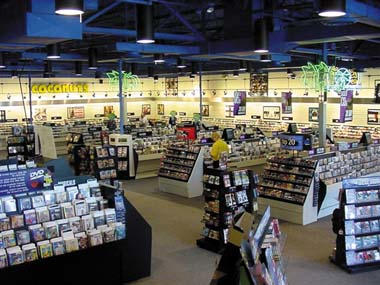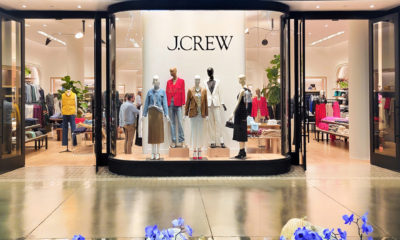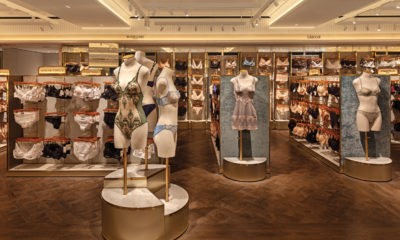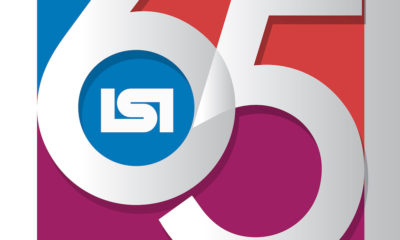Issues related to retail lighting are about to get more complicated when the new ASHRAE/IESNA standard 90.1 goes into effect in July.
However, lighting experts tell retailers not to panic. The code is not as confusing as it seems. And besides, technology is available to help retailers achieve compliance now and, in the long run, conserve resources and save money through reduced energy costs.
The code – full name: Energy Standard for Buildings Except Low-Rise Residential Buildings – was created by ASHRAE (American Society of Heating, Refrigerating and Air-Conditioning Engineers) and the IESNA (Illuminating Engineering Society of North America) to create a new national energy code standard that sets 1.9 watts per square foot as the allowable limit for general illumination of retail spaces.
While that seems straightforward enough, compliance is complicated by several factors. First, all 50 states have until July to come up with their own regulatory limits. Some states will simply adopt the 2004 code. But others might employ stricter regulations. For example, California's current Title 24 code, which is the most liberal at 3.2 to 4.3 watts per square foot, is expected to be revised into one of the most restrictive codes in the country.
ASHRAE 90.1 also offers additional wattages for certain retail applications. Specifically, retailers can be eligible for an additional 1 watt per square foot for chandeliers; 1.6 watts in display areas; and 3.9 extra watts for fine merchandise displays, including jewelry, china, art and crystal.
After the July deadline, whenever a building permit is filed, whether for new construction or a major remodel, the project will have to be in compliance. Retailers looking to roll out new prototypes or build new stores will have to become current on regulations in states where they plan to do their construction.
For a large national chain retailer, one option is to identify the store location with the strictest wattage limit and design a prototype to that code. That would put all others in compliance, as well. Another option is to create two lighting designs, using the more liberal one in most stores across the country, and the most restrictive in areas where it is required.
“What's important is that a retail executive doesn't walk into a store in California and then go into a store in Texas and wonder who turned the lights out,” says John Sapanaro, president of Lighting Management Inc. (New City, N.Y.). “The last thing any retailer wants is to have different images or an asymmetrical feel to its spaces around the country.”
Lighting the Way to Code Compliance
David Apfel, president, David Apfel Lighting Design (New York), recalls when the first ASHRAE standard was put out in 1975 and the industry wondered, “How are we ever going to light a store again?”
“Over the last 30 years, it has gotten even stricter and this latest version is stricter yet,” he says. “On the other hand, the lighting technology has gotten so much better, and it's gotten better more quickly than the codes have gotten tougher.”
That technology has led to a slew of new products that allow retailers to get more general and accent lighting for fewer watts. For general lighting, designers are recommending T5 fluorescents, compact fluorescents and ceramic metal halide.
For accent lighting, including wall washing and spot or flood lights, they are pointing to ceramic metal halide lamps as an option, or IRC (infrared coded) MR and PAR lamps to replace standard hallogen or incandescent.
LED is quickly rising to the forefront as an alternative for decorative and neon lighting. It may be a few more years before LED becomes widely accepted for illumination, though, since the technology is still quite expensive and it doesn't yet provide true color renderings.
Energy Efficiency
Energy efficiency, always important to retailers, is garnering even greater attention in light of the new codes.
“If there is a more energy-efficient way to do the same thing, it only makes economic sense,” says Addison Kelly, principal at US Lighting Consultants (New York). “And besides, we all have a responsibility to the planet.”
While most retailers would agree, they often balk at the upfront costs for designing or relamping a store with more energy-efficient technology, which tends to be expensive until demand and availability can drive costs down.
Kelly recalls the uphill battle she had with a retailer who was relocating to an older space. She recommended replacing the existing outdated and bulky 150 watt incandescent fixtures with 90 watt lamps. “I had to show that saving 60 watts per fixture adds up to a lot of money in the electric bill,” she says.
Apfel agrees it's a problem getting retailers to see past the upfront costs. “You may have to put more cost in the front end, but then you save money during the life of that store,” he says. “But retailers have their own math and they don't like to invest a lot of money on these systems.”
The Rebate Issue
Some states are offering rebates to make higher-costing energy-efficient systems more palatable, giving retailers money back for installing more-modern lighting technology or redesigning systems with lower wattage usage.
“With some of these jobs you can get $25 to $100 back on a fixture – the rebates could end up paying for a portion of the cost of the lighting,” says Sapanaro. “But retailers can be lazy and they don't like to break out of their habits. The irony is that if they don't try it, they're missing out on free money.”
Apfel says retailers should also look at the life of a lighting system to see the potential cost savings from using energy-efficient technology.
“The return on investment may not happen for two to three years, but every year after that you are saving money,” he says.
The bottom line, Apfel says, is that the new energy code makes sense not only to the environment, but also to retailers' budgets and bottom line, through potential rebates and energy savings.
“It's the smart and right thing to do,” he says.
For more information on ASHRAE 90.1, visit the Illuminating Engineering Society of North America's web site at www.iesna.org; American Society of Heating, Refrigerating and Air-Conditioning Engineers, www.ashrae.org; and the U.S. Department of Energy, www.doe.gov.


 Photo Gallery1 week ago
Photo Gallery1 week ago
 Headlines3 days ago
Headlines3 days ago
 Headlines1 week ago
Headlines1 week ago
 Headlines1 week ago
Headlines1 week ago
 Designer Dozen2 weeks ago
Designer Dozen2 weeks ago
 Headlines1 week ago
Headlines1 week ago
 Designer Dozen6 days ago
Designer Dozen6 days ago
 Headlines1 week ago
Headlines1 week ago













